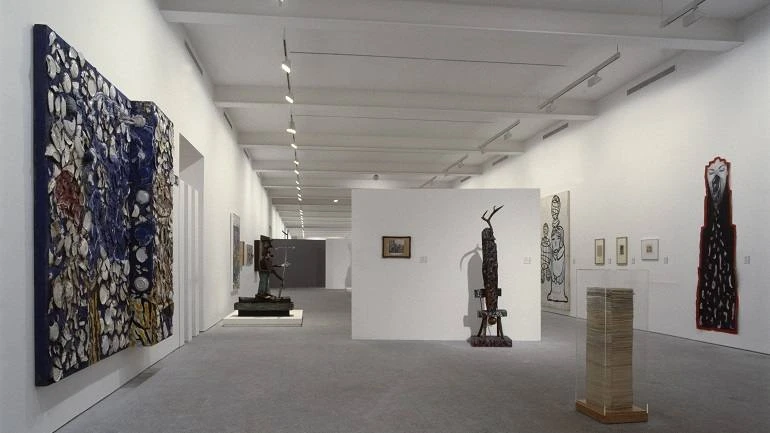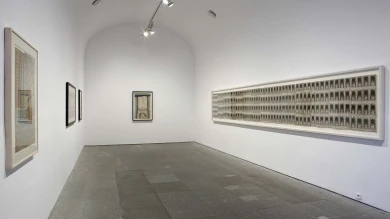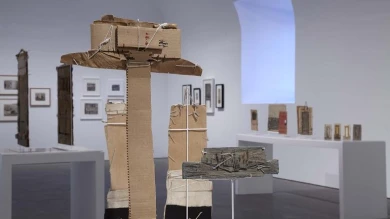Parallel Visions. Modern Artists and Marginal Art

The exhibit gets underway with Paul Klee and Surrealism with his piece on psychological automatism and the subject-creator; Jean Dubuffet, Art Brut theorist and founder of the museum that goes under the same name; the members of theCoBrA Group with their approach to New Primitivism; Alfonso Osorio, the bridge between Europe and the USA, and the Chicago Group. It comes to a close with contemporary artists such as Anette Messager, Christian Boltanski and Donald Baechler. It shows how the interest that causes each artist to consider the creative worth in madness and even promote the work of marginal artists is different. While some recognise the formulation of spontaneous language that gives rise to subjective and intuitive impulses, others, Salvador Dalí for instance, with his conquest of the irrational, look to rigorously control the creative process and understand it as: “The transcription of an imagined reality that occurs previously in the artist's mind, or hallucinations in the case of psychiatric patients”, in the words of Roger Cardinal. Years later German Neo-expressionist artists such as Georg Baselitz and Jörg Immendorf substantiate the art of psychiatric patients as a paradigm of transgression used as a type of critique about modern culture.
In this, an osmosis between modern artists and marginal art, the exhibition unveils a kind of continuity in formal aspects, recognising them as the dominant language, together with assemblage and object art, and a figuration intersected by Surrealism and Expressionism.
Artists
Los Angeles County Museum of Art, Los Angeles (October 18, 1992 - January 3, 1993); Kunsthalle, Basel (July 4 - August 29, 1993); Setagaya Art Museum, Tokyo (September 30 - December 12, 1993)
Organised by
Los Angeles County Museum of Art
Image gallery

Itinerary
Los Angeles County Museum of Art
18 October, 1992 - 3 January, 1993
Museo Nacional Centro de Arte Reina Sofía
9 February, 1993 - 9 May, 1993
Kunsthalle, Basilea
4 July, 1993 - 29 August, 1993
Setagaya Art Museum, Tokyo
30 September, 1993 - 12 December, 1993

